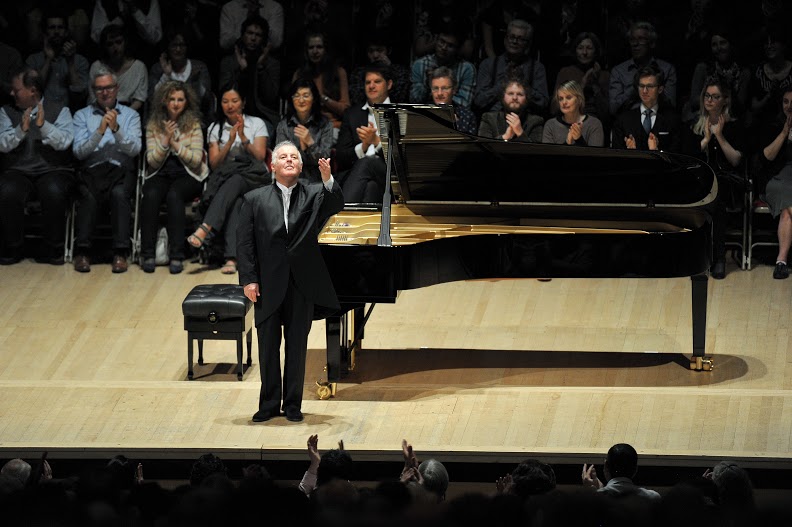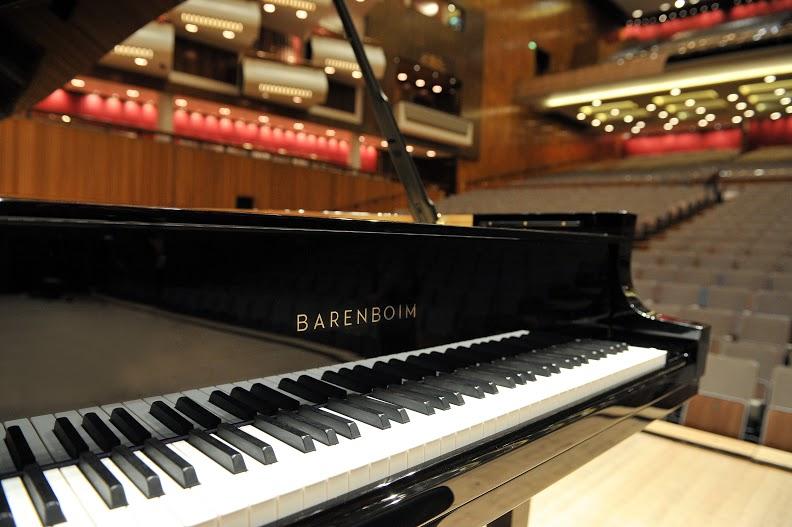Personality is essential for Schubert’s piano sonatas. Listen to two recordings of the same one and you could easily think they are different works, such is the performer's input. Daniel Barenboim would therefore seem ideal. He’s a huge personality – he even has his own name emblazoned in large gold letters on the lid of his piano: a personality verging on a cult. But it’s not quite right for this music.
Barenboim always trades in big passions; Schubert does not – or only in late works, and even then not exclusively. To negotiate the more delicate music of the early B major Sonata, D575, Barenboim toned it down, resisting the temptation to make major interpretive interventions. The results were worthy, but hardly a revelation. Fortunately, as the programme moved on to sonatas from Schubert’s final years, the G major, D984, and the towering C minor, D958, the composer’s temperament moved into alignment with the pianist’s.
The pianist is using this recital series to unveil his new instrument, generating much debate about its merits. Like Jessica Duchen, who reviewed the first concert for theartsdesk, I’m in the pro camp. The piano has an impressively distinctive tone, complex and rich in every register. It doesn’t have a huge voice, but it’s big enough to fill the Festival Hall. Textures are clear and there is no apparent noise from the action. The one weakness is its sustain pedal, which audibly changes the tone of the entire instrument every time it is depressed. Barenboim uses it a lot, even pedalling the individual notes of semiquaver runs (why?), making what might otherwise be a minor flaw into a continuous issue.
The B major Sonata, D517, is an early work, dating from 1817. There are all sorts of paradoxical issues here, and under Barenboim’s hands they always remained so. What, for example, to do with the desperately simple melody that appears a minute or two into the first movement. Accentuate its naiveté, perhaps? Or inject some irony to hold it at a distance? Barenboim does neither, he just plays it straight. As the movement goes on, there is much repetition, and it is up to the pianist to make it matter. But again, Barenboim demurs.

With the next sonata, the G major D894, we jumped to Schubert’s final years, and the interpretive ideas started to fall into place. Barenboim (pictured above) can always be relied on to supply a sublime slow movement, and that’s exactly what we got here. His new piano always picks out the individual notes, it never lets him melt them into legato lines. But it’s a constructive tension, and that clarity of texture brings its own virtues.
The C major Sonata in the second half was the most successful: It’s a superior piece, but it was also given a more insightful reading. Barenboim has touted the range of colours from his new piano as one its virtues, and that came through in the range of moods and textures he was able to paint in the first movement. The Adagio second movement was just sublime – no hint here of the interpretive reticence earlier on. But in the finale the sheer weight of emotion again became a hindrance. As Schubert balanced light and dark, the fatalistic descending fifths in the bass alternating with filigree figures in the treble, it became clear that Barenboim’s interpretive sympathies lay with those bass figures, the lightness of the treble interjections repeatedly eluding him. Schubert wrestles with the two sides of his personality as both vie for our attention through these closing passages. Barenboim is sympathetic, but he only gives us half the story.














Add comment